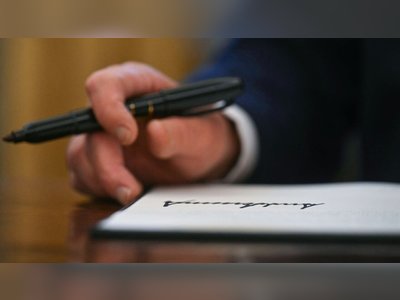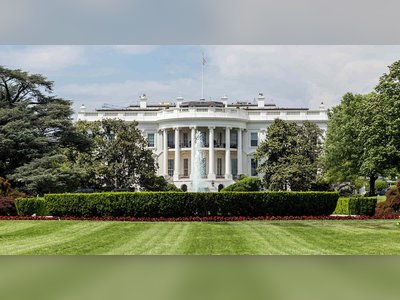
Zimbabwe launches gold coins as legal tender to tackle hyperinflation
Zimbabwe has launched new gold coins to be sold to the public in a bid to tackle chronic hyperinflation.
The gold coins - called Mosi-oa-Tunya - will have "liquid asset status", meaning they can be converted to cash, traded locally and internationally, and used for transactions, the Reserve Bank of Zimbabwe said.
People can only trade the coins for cash after holding them for at least 180 days.
Zimbabwean economist Prosper Chitambara said: "The government is trying to moderate the very high demand for the US dollar because this high demand is not being matched by supply."
According to the International Monetary Fund, inflation in Zimbabwe reached 837% (year on year) in July 2020 and, although tighter fiscal policy helped reduce it to 60.7% by the end of last year, it remains in the high double-digits.
This wipes away the value of people's savings - many people saw their savings wiped out by the 5 billion per cent inflation seen in 2008, according to the IMF.
This insecurity affects trust in the local currency, the Zimbabwe dollar - many retailers don't accept it and many Zimbabweans prefer to use US dollars for savings or daily transactions.
'Chronic hyperinflation'
Mr Chitambara said: "For Zimbabwe we are in chronic hyperinflation so the expectation is that there will be a huge uptake of these gold coins."
The coins, which have a purity of 22 carats, will be priced based on the international market rate for an ounce of gold, plus 5% to cover production and distribution.
But that price could put them out of reach for many people in a country so poor that a third of the population is at risk of food insecurity.
At the time of the launch on Monday, the cost of a Mosi-oa-Tunya coin was US$1,824 (£1,514).
"For the common man, there is not really much to benefit directly from this, especially if you don't have any excess cash," said Mr Chitambara.
"Many people have no money for bread, let alone for savings.
"The expectation is that indirectly it will benefit the ordinary person through moderating the prices."
Concerns over increased smuggling
Concerns have also been raised that the new coins could result in increased gold smuggling.
Zimbabwe has big gold deposits and exporting the metal provides one of its main foreign currency earners.
But smuggling is widespread as, while all gold mined in the country is legally required to be sold to the central bank, many producers prefer to move it overseas to get payment in US dollars.
Securities firm Morgan & Co said in a market intelligence report: "Gold deliveries in Zimbabwe have significantly recovered because of the appetising US dollar payments offered to artisanal miners.
"However, should there be a disparity between the amount of US dollars used to purchase the gold from miners and the US dollars used to pay for the coins, this could squeeze the central bank and its intermediaries' foreign currency reserves.
"If this ripples to artisanal gold miners, this could result in low deliveries to Fidelity Printers and increase gold smuggling activities."
Fidelity Printers, a subsidiary of the central bank, is the country's only authorised gold buyer.










